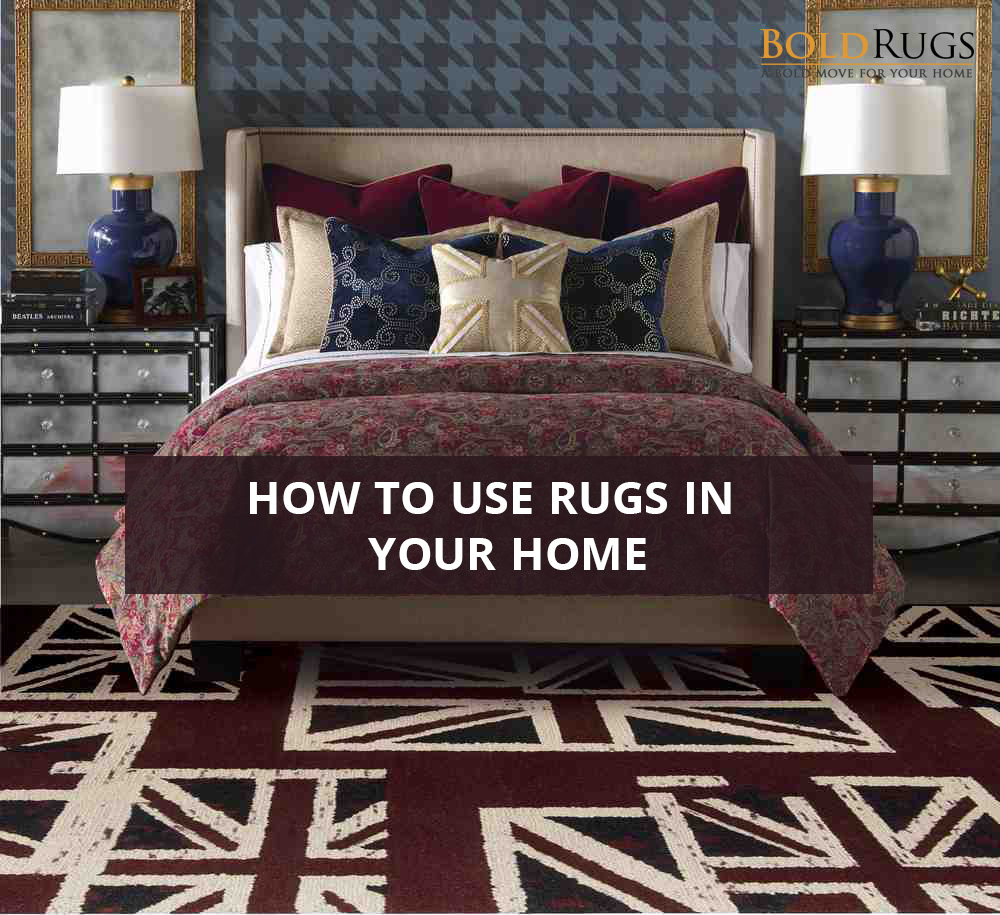Whether you’re just beginning to decorate your home with area rugs for the first time or you’re an old pro looking for some fresh ideas, you’re in the right place. It can be a little challenging to figure out how to use area rugs in your home, but we hope to provide you with plenty of tips and suggestions to help you get started or make some changes and upgrades to the way you’ve been decorating your home for the past several years. Check out our information below to help you get started and you’re sure to find something you want to try out in no time!
Choose a style
The first and most important part of decorating with area rugs is to make sure you know which style you’re working with. There are three different styles of area rugs: contemporary, transitional, and traditional. Antique rugs are traditional rugs, but they’re in their own category—at least, if you’re talking about a real antique rug and not a reproduction. Picking the style of your room is crucial to choosing the right furnishings, colors, decorations and even wall treatments as well as the right area rug.
A contemporary rug can be almost any size, shape, color or pattern, as long as it isn’t traditional. These rugs are often round or square, however, and they usually are found in bold solid colors or in abstract prints and patterns. Animal print rugs also fall into the contemporary category. Smaller rugs are more contemporary than larger rugs, but any rug size can theoretically work as a contemporary piece.
Traditional rugs are the opposite of contemporary. They fit into a specific appearance and are usually characterized by their borders, floral or repeating geometric patterns, and earth tones. These rugs look like they might have belonged in palaces or homes of the wealthy a long time ago. They are usually made of wool and are often found in larger, rectangular options.
Finally, transitional rugs combine both of these designs to create something that incorporates both at once. You may find a transitional rug that is small and round but has a traditional pattern, or you might find one that’s large and rectangular but is a solid color shag rug instead. Look for elements that come from both other design categories if you want a transitional space.
Choose a material
The material you choose is largely dependent on how you plan to use your rug. If it’s going to be a centerpiece to your room and you don’t plan to have much foot traffic on it, then by all means, go with something lighter and more delicate like silk if possible. However, if you want something that can hold up to lots of foot traffic in a hallway or food spills in a dining room, stick to manmade fibers that can be easily cleaned. Wool is a good all-around choice that works in just about every situation, too.
For outdoor rugs, be sure you select materials that can hold up to use outside in the elements. Jute is a great option, and so is hemp. You may also find rugs that are made of recycled rubber from tires or shoes, and these are excellent choices for the outdoors. With any outdoor rug, however, you can expect it to last for less time than an indoor rug, and you may need to plan to clean it a lot more often in order to keep it looking and functioning great for as long as possible.
Choose a size
Pick the right size rug for the space you want to decorate. A large rectangular floor-sized area rug looks great in spacious traditional rooms, but if you have a small living room, you might want to stick to accent pieces in front of a couple of furnishings or in the doorway instead. Runners can be a great way to divide very large rooms visually and separate different types of design elements from each other, too. You can also use runners of just about any length in hallways and entryways to guide the eye into the home and throughout the decor surrounding the rug.
Remember that the size of rug you choose will contribute to the design of the room, too. Contemporary rugs are usually smaller, but a large rug in a solid color or abstract pattern can be very modern too. On the other hand, a traditional rug is almost never small and should almost always be chosen in a large size that’s meant to be a centerpiece to the room.
Choose a shape
Finally, pick the right shape of rug for your needs. Remember that a traditional rug should nearly always be rectangular or maybe square, but a contemporary or transitional rug can be just about any shape. If you want something really unique, you can even find rugs in shapes like stars or flowers, but these are decidedly very contemporary in nature and are often meant for children’s rooms or playrooms.
Smaller rectangular rugs make great accent pieces, and semi-circle or round rugs can be ideal for kitchens, entryways, and outdoor spaces as well. Long rectangular runners are good for hallways and open concept rooms, while oval-shaped rugs are perfect for setting up a country style space—especially a kitchen. The shape of rug you go with can truly help define the room you’re decorating.
Conclusion
Decorating with area rugs is a personal experience that can take some time to figure out. In the end, the best rug for your needs is a rug that you love and that you’ll want to decorate with for many years to come. However, learning how to choose a rug based on its design elements and whether or not it matches or complements the rest of the decor in the room is an important step toward improving your interior decorating, too, so take your time learning about how to choose a rug. You’ll be glad you did!
